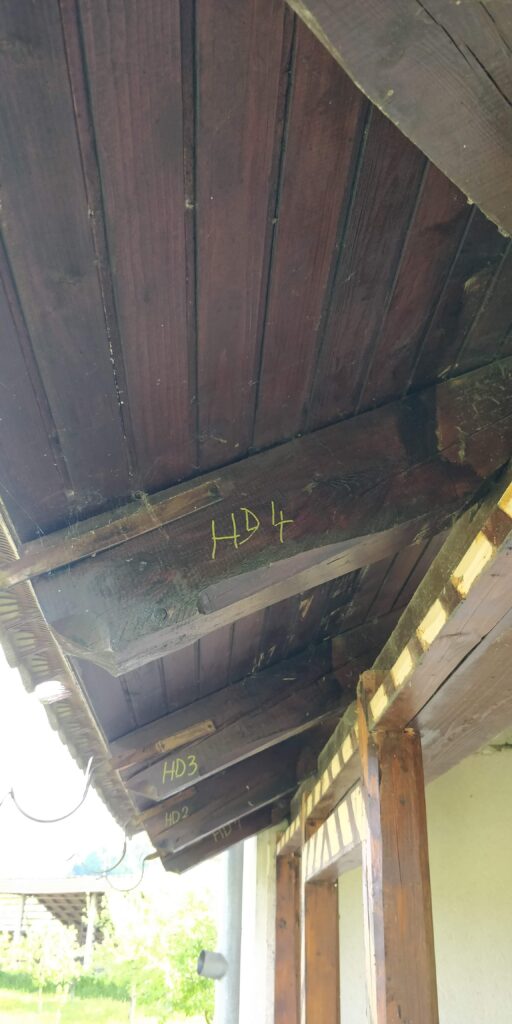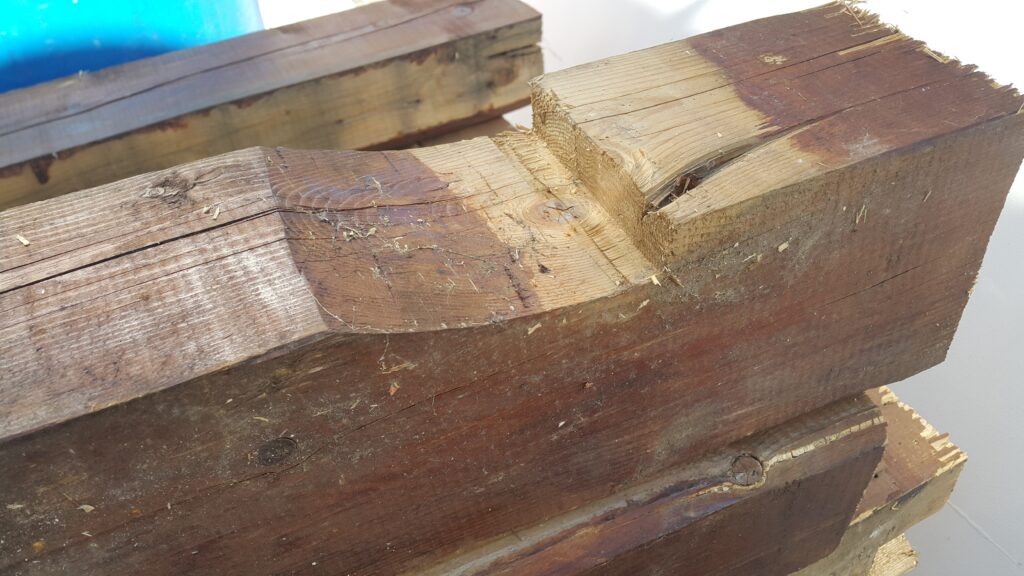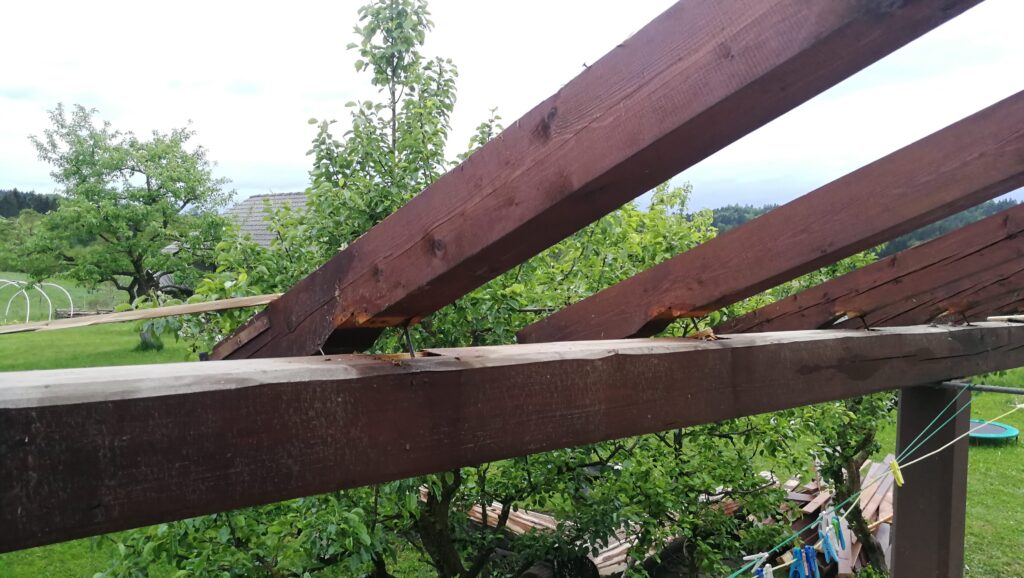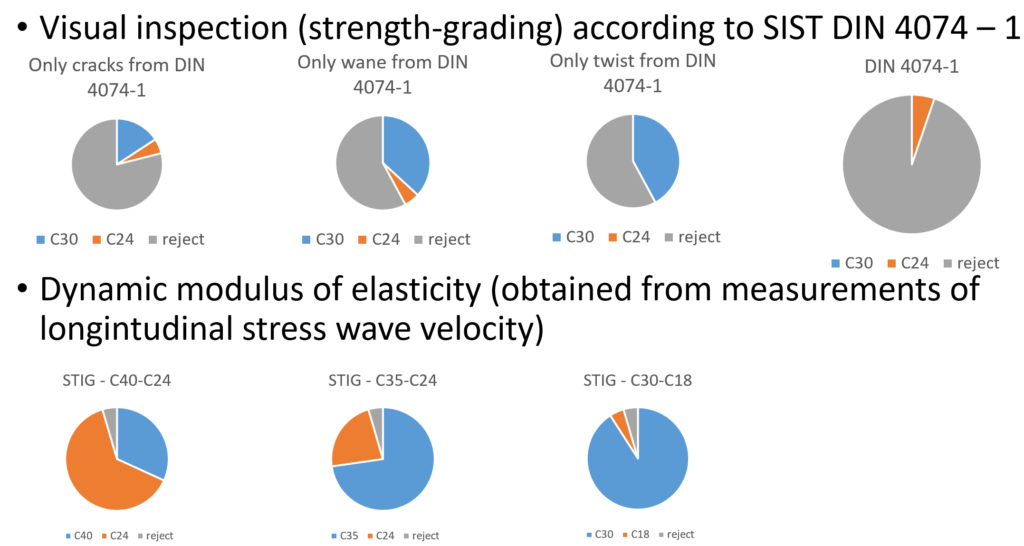Issues concerning the reuse of timber members as structural elements in new constructions are relatively new and not well known. We hope to establish non-destructive methods that will estimate mechanical properties of reclaimed timber, to assess if the element meets all the design and constructional requirements for future use. Due to current demolition situation in practice, quality and quantity of wood generated is usually not suitable for reuse. The largest share is used as fuel source in households and no attention is focused on preserving timber that could be used further for structural purposes. However, even if the wood is well preserved it is usually severely damaged by demolition machines, because compared to selective deconstruction, demolition is easier for companies in terms of labor cost and work time.
At the university of Ljubljana we already started doing first tests on the reclaimed wood.
Our first option was to reclaim the support structure of the old lumber mill roof, but the company doing the removal did not take enough care, as you can see from the video below:
We eventually got hold of a couple of rafters (14) and beams (4) from a timber roof



We did some nondestructive testing on site, prior to disassembly, and a whole range of non destructive testing, all that was available at our laboratory, on the disassembled elements.
Brief results of some of the nondestructive testing, summarized:

Deterioration of wood has effect on the mechanical properties of the material. Our first goal was to observe which factors are more significant than others. Visual inspection consists of examination of wood defects, signs of damage or deterioration and other characteristics of timber that are used to predict its strength. With visual grading in accordance with SIST DIN 4074 – 1 majority of timber pieces are rejected and only a few are sorted in C24, as can be seen in the chart. If we take into account only certain parameters, for example only wane, more than 30 % of specimens are sorted in C30. Another approach to NDT is machine strength grading. Reclaimed timber elements were graded with the STIG grading machine (settings derived for Slovenian spruce) in different grade combinations. In contrast to the visual grading only a small percentage of specimens is rejected.


